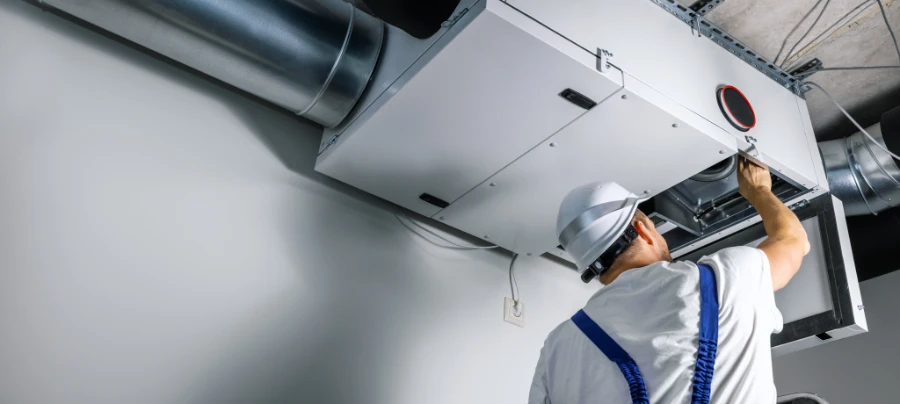
The WHO overturned dogma on how airborne diseases spread
The WHO now states that exhaled pathogens remain suspended in air contrary to the belief that pathogens were transmitted through droplets… The answer is SteriSpace®
With organizations returning to the office again, it is critical we fully understand how the disease is transmitted so that we may protect ourselves and work to slow its spread while returning to a “normal” work environment.
According to guidance provided by the Centers for Disease Control and Prevention (CDC), it is important to make multiple improvements to building ventilation to reduce the spread of disease and lower the risk of exposure. In addition to these improvements, physical distancing, wearing face masks, hand hygiene, and vaccination should be considered contributing factors in stopping the spread.
It is important we separate fact from fiction when understanding how the virus spreads related to HVAC systems and the measures we can take to avoid infection.
In most cases, reoccupying a building during the COVID-19 pandemic should not require a new building ventilation system. However, ventilation system upgrades or improvements can increase the delivery of clean air and dilute potential contaminants. Consult an HVAC professional when considering changes to the ventilation system.
Kitchens and break rooms are high-traffic areas in the workplace so ensuring proper ventilation in these areas can help prevent the spread of the virus.
It is best to operate the system even when the building is not occupied because it will help to increase the overall ventilation when the building is occupied in the future.
Indoor ventilation challenges are often inherently unavoidable. This leads to airborne viral particles becoming particularly concentrated. However, ventilation strategies can help reduce indoor viral particle concentration problems. These include introducing outdoor air by opening windows (if weather permits) and ensuring ventilation systems operate properly and providing acceptable indoor air quality for the current occupancy level for each space.
Investigators examined that the fan coil units were just recirculating air inside of a room, not spreading the droplets.
The National Institutes of Health (NIH) and the CDC state that the virus can survive for different lengths of time based on the surface. Rob Tanner, director of marketing of air handling systems at Johnson Controls states that changing the filters regularly and on schedule, while understanding how these systems operate is important.
There is no definite evidence that the virus has been transmitted through an HVAC system or that the HVAC system is highly contaminated. However, improving a building’s ventilation can help reduce the spread of the disease and lower the risk of exposure.
What we know about how COVID-19 spreads is constantly developing, and as a result, public health guidance will continue to evolve. In the meantime, it is important to follow valid resources that include the World Health Organization and the CDC when researching COVID-19.

The WHO now states that exhaled pathogens remain suspended in air contrary to the belief that pathogens were transmitted through droplets… The answer is SteriSpace®

The project, which included UB’s Center for Integrated Global Biomedical Sciences, aims to keep hospitals and schools clean from viruses and microbial growth.

Proper ventilation in buildings is vital to maintaining good air quality. Click here to find out about the correct ventilation rate in buildings.